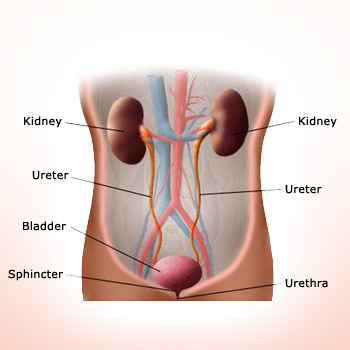 Kidneys are two bean – shaped organs
The kidney is composed of an enormous number of minute tubules called nephrons or uniferous tubules or renal tubules or just kidney tubules. These nephrons are the structural as well as functional units of the kidney.
Kidneys are two bean – shaped organs
The kidney is composed of an enormous number of minute tubules called nephrons or uniferous tubules or renal tubules or just kidney tubules. These nephrons are the structural as well as functional units of the kidney. Kidneys are two bean – shaped organs, each about the size of your fist,10 cm long and 6 cm wide, located on either side of the backbone, just below the rib cage and protected by the last two ribs.
Kidneys weigh about 0.5 percent of total body weight. The right side kidney is at a slightly lower level than the left one. Kidneys receive the blood from the renal artery, process it, return the processed blood to the body through the renal vein and remove the wastes and other unwanted substances in the urine. A tube, the ureter, arises from the notch (hilum) in the median surface of each kidney and connects behind with the urinary bladder in the lower part of the abdomen. The front end of the ureter is somewhat expanded into the kidney and is called the pelvis. Urine flows from the kidneys through the ureters to the urinary bladder. In the bladder, the urine is stored until it is excreted from the body through the urethra. The kidney is the only organ of the body in which two capillary beds, in series, connect arteries with veins. This arrangement is important for maintaining a constant blood flow through and around the nephron despite fluctuations in systemic blood pressure.
The kidney is composed of an enormous number of minute tubules called nephrons or uniferous tubules or renal tubules or just kidney tubules. These nephrons are the structural as well as functional units of the kidney. These tiny, tubular structures that stretch across both regions perpendicular to the surface of the kidney and in each kidney, there are one million of these structures. Each of them is about 4 – 6cm long and the total length of tubules together is more than 60km. This great length provides a huge surface for reabsorption of usable substances specially water, as the contents move through them. Blood flowing through kidneys per minute is about one liter.